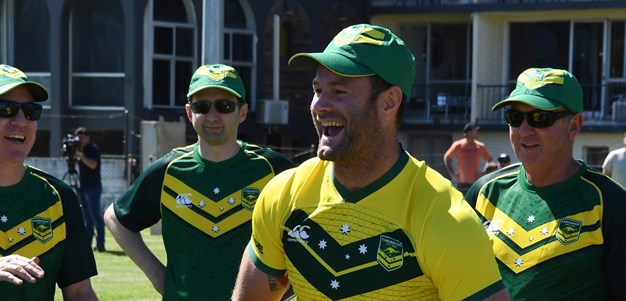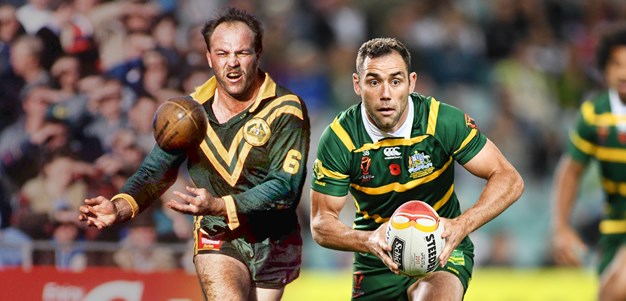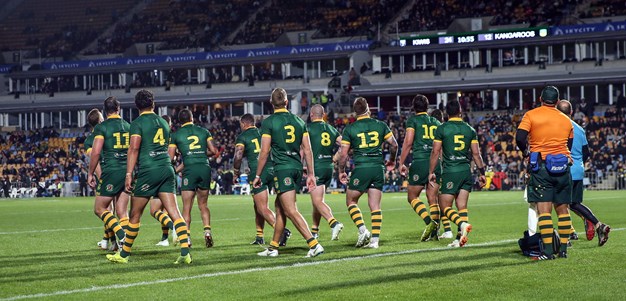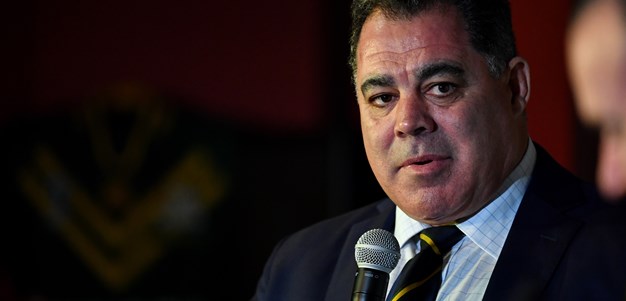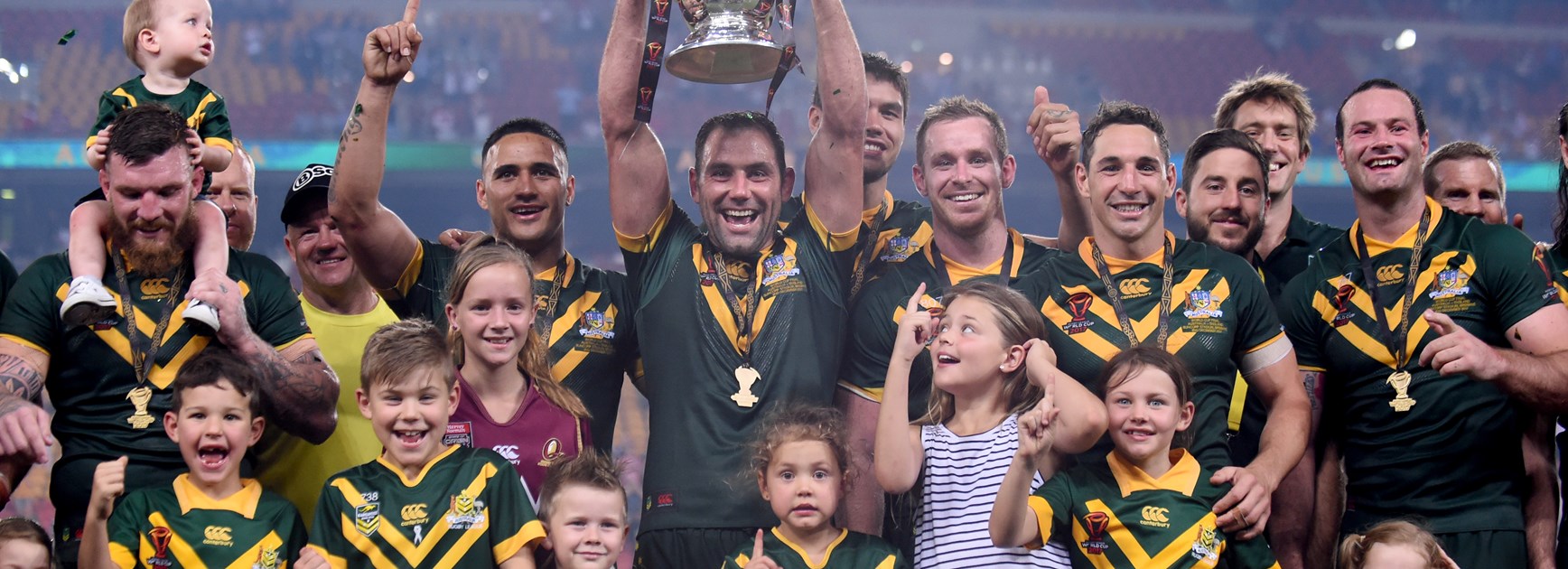
Just as he did at every level of the game, Cameron Smith made a habit of winning on the World Cup stage for the Kangaroos.
Smith holds the record for the most World Cup appearances by any player from any country with 17, two more than another green and gold legend Bob Fulton with 15.
Remarkably, Smith was victorious in 16 of his 17 World Cup games, starting with a 30-6 win over New Zealand at the SFS in 2008 and culminating with a 6-0 defeat of England in the 2017 Final in Brisbane.
A two-time World Cup champion, Smith’s only defeat came in the 2008 Final when Benji Marshall led the Kiwis to an historic triumph over their arch-rivals from across the Tasman.
For Johnathan Thurston, who shared so much success with Smith at Origin and Test level, the major difference between Captain Cam and his contemporaries was the mental side of the game.
“His mental toughness is remarkable. No one can break him,” Thurston said in ‘110 Years of Rugby League’ in 2018.
“To play in the position he has for as long as he has and play that amount of games, you need to be quick between the ears and mentally tough and he has both those qualities in spades.
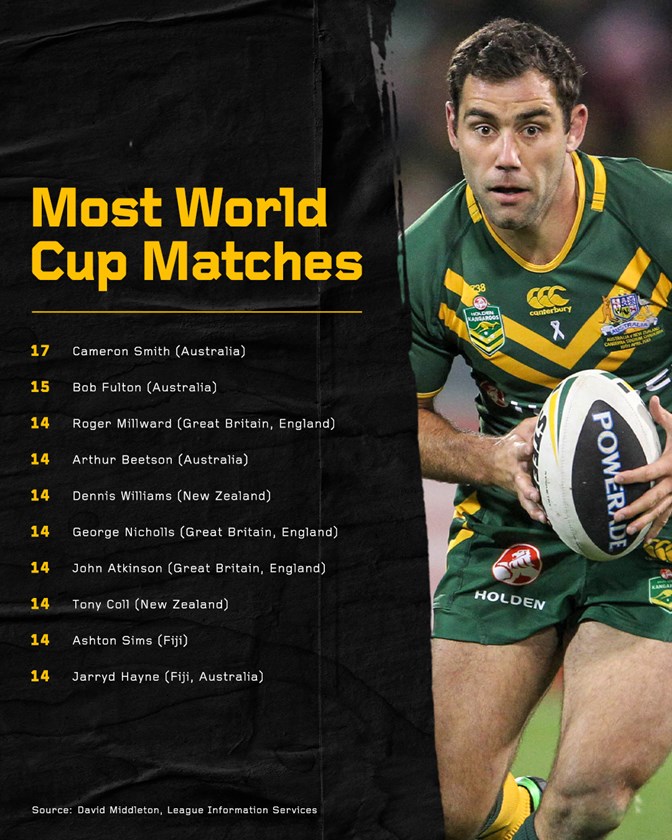
“I played a lot of footy with Darren Lockyer and I used to think he was about four or five sets ahead of everyone else on the field, but Cam is eight or nine sets ahead.
“Cam is so calm and controlled, you wouldn’t know if you’re 10 points behind or 10 in front. That’s what I’ve tried to take away from playing alongside him. I play with my heart on my sleeve and I’m easy to read but he’s got the best poker face of all.
“He’s played more games than anyone in history and the legacy he leaves in all three teams (Storm, Queensland, Australia) is unparalleled. For a bloke from Logan from the south side of Brisbane to go on and captain his state and his country and achieve what he has, it’s an amazing story.”
It’s a theme that echoes down through the generations of Kangaroos heroes, with the men who sit second and third on the list of most World Cup games both enjoying remarkable rises from humble beginnings.
For Fulton and Arthur Beetson, who played 14 World Cup matches, many of their crowning achievements came in the green and gold, with ‘Bozo’ savouring World Cup glory as a 21-year-old when Australia downed France 20-2 in the 1968 Cup Final in Sydney.
The Cameron Smith legacy
Two years later he was at it again, claiming man of the match honours as Australia beat Great 12-7 in Sydney to take out the 1970 tournament.
In 1975, Fulton savoured World Series glory in an Australian team also featuring Big Artie, Graeme Langlands, Ron Coote and Mick Cronin.
Discovered by Ken Arthurson in Wollongong as a 17-year-old, Fulton was playing first grade by 18 and Test football by 21, serving notice of what was to come in one of the game’s most celebrated careers.
Why the green and gold jersey was the pinnacle for Bob Fulton
“The qualities that set Fulton apart as a rugby league player were qualities that trigger success in almost any field of human endeavour. His ambition for starters. His relentless work ethic… the mental toughness that drove him to a level of competitiveness beyond the scope of most mortals,” wrote former Rugby League Week editor Norman Tasker in ‘The Immortals’ tribute magazine in 2012.
“As a competitor first and foremost, Fulton had a relentless edge that lifted him above the pack at almost any level. He trained harder than anybody else.
“His mind was a steel trap, analysing and conspiring and looking for a new edge when most ordinary souls would long have tuned out.”
Remembering an Immortal: Arthur Beetson
Making his World Cup debut just a week after Fulton in 1968, Beetson proved a nightmare for opposition defences from the start with his sublime ball skills and surprising agility for such a big man.
Hailing from Roma in central Queensland, Beetson came down to Sydney to play with Balmain in 1966, making his Test debut that same year and going on to become the first Indigenous Australian to captain his country in any sport.
Among his 14 World Cup matches for Australia were a string of outrageous performances during the Kangaroos’ march to glory in ’75, prompting renowned journalist Geoff Prenter to describe him as rugby league’s ‘Towering Inferno’.
“Taming him is almost an impossible task. The fact is big Artie only needs to play 40 minutes of football for Australia to get on top of the opposition,” Prenter wrote.
“Such was the case against France when Beetson got Australia away to a flying start in the first 30 minutes.
“When France edged a little closer Artie again hit his straps and sent the Frenchmen reeling.
“England coach Alex Murphy rates Beetson the best forward in the world. I would go one step further – I would rate him the best player in the game today.”
One of the players under Murphy’s tutelage during that series was champion playmaker Roger Millward, who sits alongside Beetson and Fulton on 14 World Cup appearances, the last of which was the epic 1977 Cup Final at the SCG.
With a 32-year-old Beetson still going strong the Kangaroos beat the Lions 13-12, with Russel Gartner, John Kolc and Allan McMahon scoring tries.
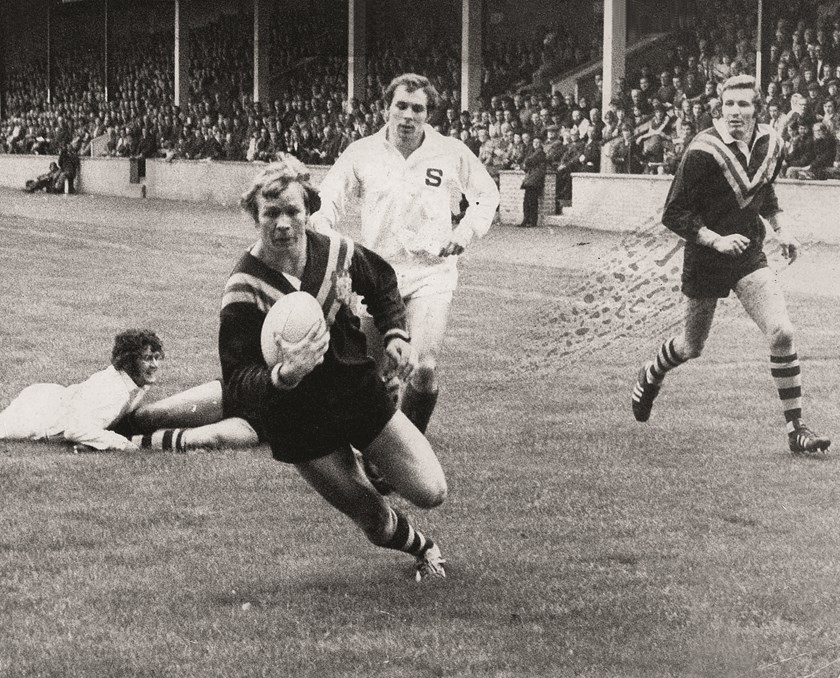
Millward had enjoyed a superb tournament, snaring three tries in three games, but with the trophy on the line it was Beetson’s leadership and Cronulla lock Greg Pierce’s tireless defence that helped Australia secure their fifth World Cup success.
Just as the game’s highest honours would be bestowed on Beetson and Fulton in the years to come, so too Millward, who was awarded the MBE in 1983 for his services to rugby league, and was inducted into the Rugby League Hall of Fame in 2000.
Legends. Champions. Men who brought out their best when the world was watching to help their country reach the top of mountain.

